Ultrasonic-Catalyzed Oxidation and Dissolution of Tin Using Hydrogen Peroxide
Abstract
:1. Introduction
2. Results and Discussion
2.1. Influence of Reaction Factors on the Effectiveness of Tin Dissolution
2.1.1. Effect of Temperature
2.1.2. Effect of Ultrasonic Power
2.1.3. Effect of H2O2 Addition
2.1.4. Effect of NaOH Addition
2.1.5. Effect of Ultrasonic Time
2.1.6. Comparison of Tin Dissolution at Maximum Efficiency (>99%) Under Ultrasonic and Conventional Conditions
2.2. Mechanism of Ultrasound-Enhanced Tin Dissolution at Room Temperature
2.2.1. Increasing the Generation of Free Radicals with Ultrasound
2.2.2. Increasing the Surface Roughness of Tin Sheets with Ultrasound
2.2.3. Elimination of Passivation Layer on the Surface of Tin Sheets with Ultrasound
3. Materials and Methods
3.1. Materials
3.2. Experimental Principles and Procedure
3.3. Characterization Equipment
4. Conclusions
Author Contributions
Funding
Institutional Review Board Statement
Informed Consent Statement
Data Availability Statement
Conflicts of Interest
References
- Taninouchi, Y.-K.; Uda, T. Rapid Oxidative Dissolution of Metallic Tin in Alkaline Solution Containing Iodate Ions. J. Sustain. Metall. 2021, 7, 1762–1771. [Google Scholar] [CrossRef]
- Bai, R.; Li, W.; Chu, B.; Huang, X.; Long, Z.; Wang, L.; Hu, Y. A Method for Preparing Sodium Stannate with Low Free Base and Low Water Solution Turbidity. CN Patent 201911190579.1, 28 November 2019. [Google Scholar]
- Liu, L.; Jia, Q.; Wei, B.; Guo, Y.; Li, W.; Li, X. A Method for Preparing Sodium Stannate. CN Patent 201210313074.1, 30 August 2012. [Google Scholar]
- Xin, C.; Xia, H.; Zhang, Q.; Zhang, L.; Zhang, W. Recovery of Zn and Ge from zinc oxide dust by ultrasonic-H2O2 enhanced oxidation leaching. RSC Adv. 2021, 11, 33788–33797. [Google Scholar] [CrossRef] [PubMed]
- Yuan, D.; Zhou, X.; Jin, W.; Han, W.; Chi, H.; Ding, W.; Huang, Y.; He, Z.; Gao, S.; Wang, Q. Effects of the combined utilization of ultrasonic/hydrogen peroxide on excess sludge destruction. Water 2021, 13, 266. [Google Scholar] [CrossRef]
- Liu, B.; Chu, Q.; Huang, Y.; Han, G.; Sun, H.; Zhang, L. Ultrasound-Assisted extraction of Sn from tinplate scraps by alkaline leaching: Novel acoustoelectric synergy effect underlying intensifying mechanism. Ultrason. Sonochem. 2023, 100, 106631. [Google Scholar] [CrossRef]
- Liu, B.; Shi, C.; Huang, Y.; Han, G.; Sun, H.; Zhang, L. Intensifying separation of Pb and Sn from waste Pb-Sn alloy by ultrasound-assisted acid leaching: Selective dissolution and sonochemistry mechanism. Ultrason. Sonochem. 2024, 102, 106758. [Google Scholar] [CrossRef]
- McGrady, J.; Kumagai, Y.; Kitatsuji, Y.; Kirishima, A.; Akiyama, D.; Watanabe, M. UO2 dissolution in bicarbonate solution with H2O2: The effect of temperature. RSC Adv. 2023, 13, 28021–28029. [Google Scholar] [CrossRef]
- Habbache, N.; Alane, N.; Djerad, S.; Tifouti, L. Leaching of copper oxide with different acid solutions. Chem. Eng. J. 2009, 152, 503–508. [Google Scholar] [CrossRef]
- Hu, Y.; Zhang, Z.; Yang, C. Measurement of hydroxyl radical production in ultrasonic aqueous solutions by a novel chemiluminescence method. Ultrason. Sonochem. 2008, 15, 665–672. [Google Scholar] [CrossRef]
- Sun, G.; Jiang, M.; Wang, S.; Fu, L.; Zhang, G.; Hu, Z.; Zhang, L. Mechanism and Kinetic Analysis of Ultrasonic Cavitation-Assisted Ozone Dissolution of Copper. J. Sustain. Metall. 2024, 10, 170–183. [Google Scholar] [CrossRef]
- Wang, B.; Ma, X.; Zhang, S.; Jiang, J.; Shi, N. Analysis on thermal risk of hydrogen peroxide. Inorg. Chem. Ind. 2013, 45, 15–18. [Google Scholar]
- Ziembowicz, S.; Kida, M.; Koszelnik, P. The impact of selected parameters on the formation of hydrogen peroxide by sonochemical process. Sep. Purif. Technol. 2018, 204, 149–153. [Google Scholar] [CrossRef]
- Riesz, P.; Berdahl, D.; Christman, C. Free radical generation by ultrasound in aqueous and nonaqueous solutions. Environ. Health Perspect. 1985, 64, 233–252. [Google Scholar] [CrossRef] [PubMed]
- Wang, T.; Qu, H.; Ravindra, A.V.; Ma, S.; Hu, J.; Zhang, H.; Le, T.; Zhang, L. Treatment of complex sulfur-containing solutions in ammonia desulfurization ammonium sulfate production by ultrasonic-assisted ozone technology. Ultrason. Sonochem. 2023, 95, 106386. [Google Scholar] [CrossRef]
- Almeida, E.A.; Miyamoto, S.; Martinez, G.R.; Medeiros, M.H.; Di Mascio, P. Direct evidence of singlet molecular oxygen [O2 (1Δg)] production in the reaction of acetonitrile with hydrogen peroxide in alkaline solutions. Anal. Chim. Acta 2003, 482, 99–104. [Google Scholar] [CrossRef]
- Guo, Y.; Zhan, J.; Yu, G.; Wang, Y. Evaluation of the concentration and contribution of superoxide radical for micropollutant abatement during ozonation. Water Res. 2021, 194, 116927. [Google Scholar] [CrossRef]
- Shi, X.; Back, S.; Gill, T.M.; Siahrostami, S.; Zheng, X. Electrochemical Synthesis of H2O2 by Two-Electron Water Oxidation Reaction. Chem 2020, 7, 38–63. [Google Scholar] [CrossRef]
- Liu, J.; Wang, S.; Liu, C.; Zhang, L.; Kong, D. Mechanism and kinetics of synergistic decopperization from copper anode slime by ultrasound and ozone. J. Clean. Prod. 2021, 322, 129058. [Google Scholar] [CrossRef]
- Su, H.; Zhao, Q.; Wang, Y.; Zhao, Q.; Jang, C.; Niu, Y.; Lou, W.; Qi, Y. SnO nanoparticles on graphene oxide as an effective catalyst for synthesis of lubricating ester oils. Catal. Commun. 2022, 162, 106370. [Google Scholar] [CrossRef]
- Liu, J.; Wang, S.; Zhang, Y.; Zhang, L.; Kong, D. Synergistic mechanism and decopperization kinetics for copper anode slime via an integrated ultrasound-sodium persulfate process. Appl. Surf. Sci. 2022, 589, 153032. [Google Scholar] [CrossRef]
- Liu, H.; Wang, S.; Fu, L.; Le, T.; Dai, L.; Xia, H.; Zhang, L. High-Efficiency recycling of copper-cadmium slag by ozonation with ultrasonic catalysis. Sep. Purif. Technol. 2023, 313, 123539. [Google Scholar] [CrossRef]
- Ran, J.; Li, Y.; Wang, X.; Duan, H.; Chen, Y.; Yin, S.; Li, S.; Zhang, L.; Zhao, J. Metal recovery from industrial solid waste by ultrasonic-assisted hydrometallurgical leaching: A review. Environ. Chem. Lett. 2024, 22, 2055–2090. [Google Scholar] [CrossRef]

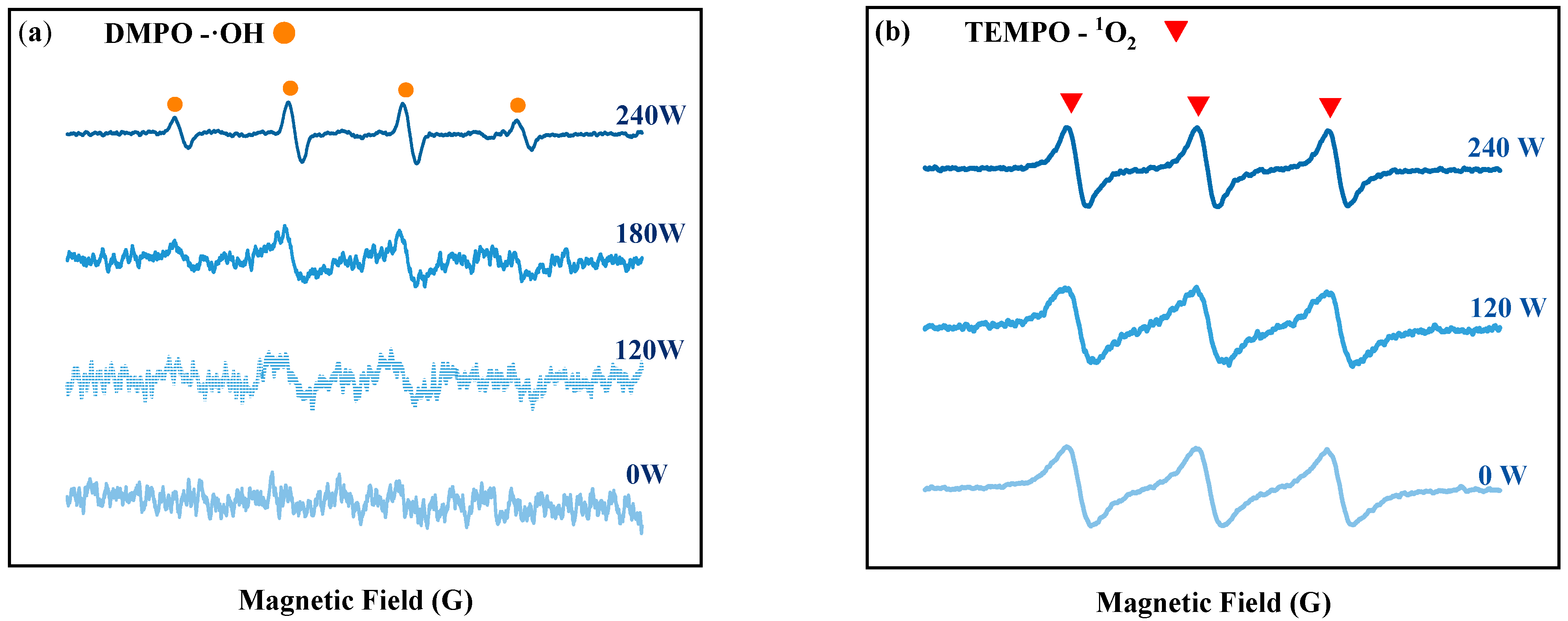
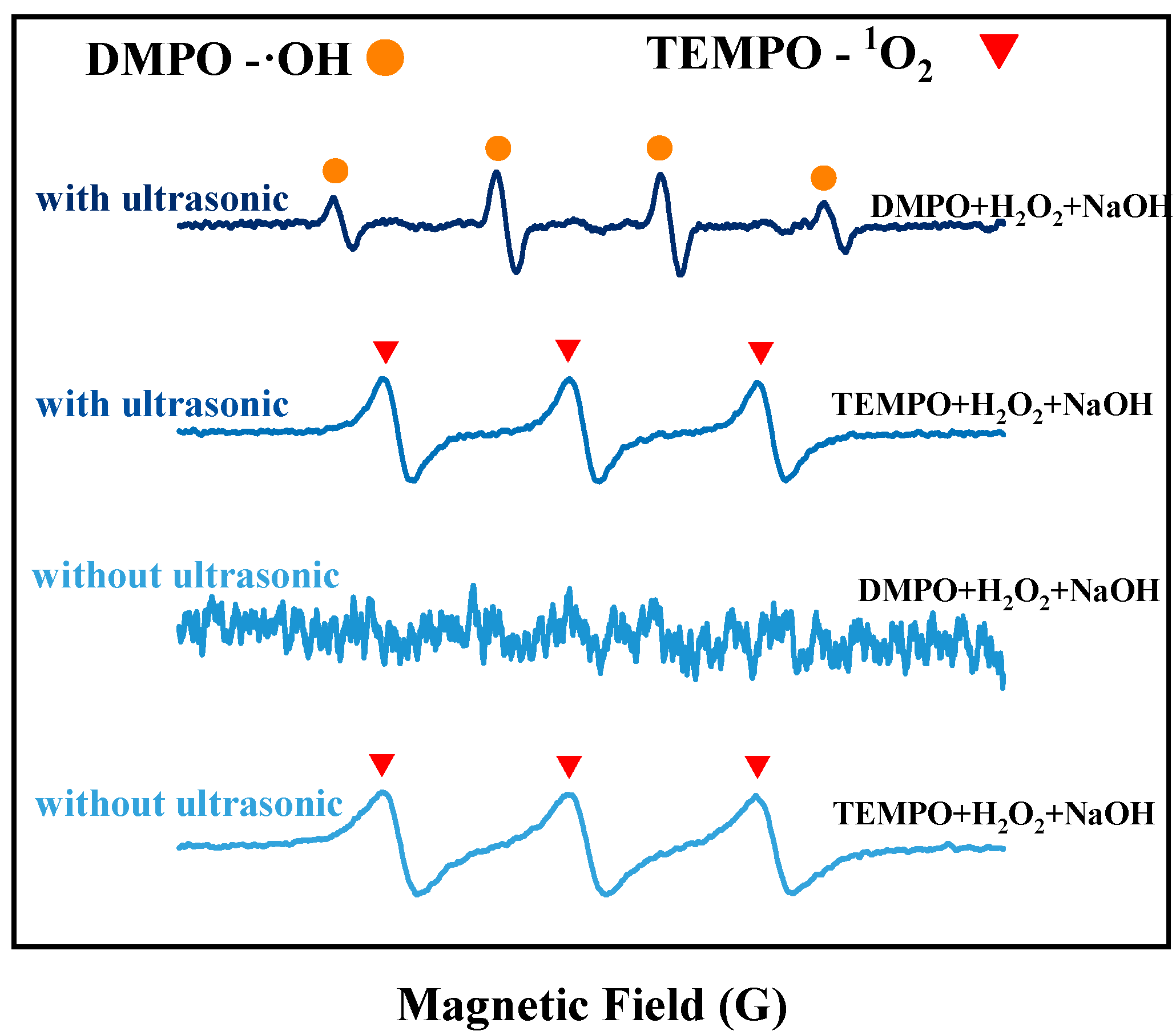
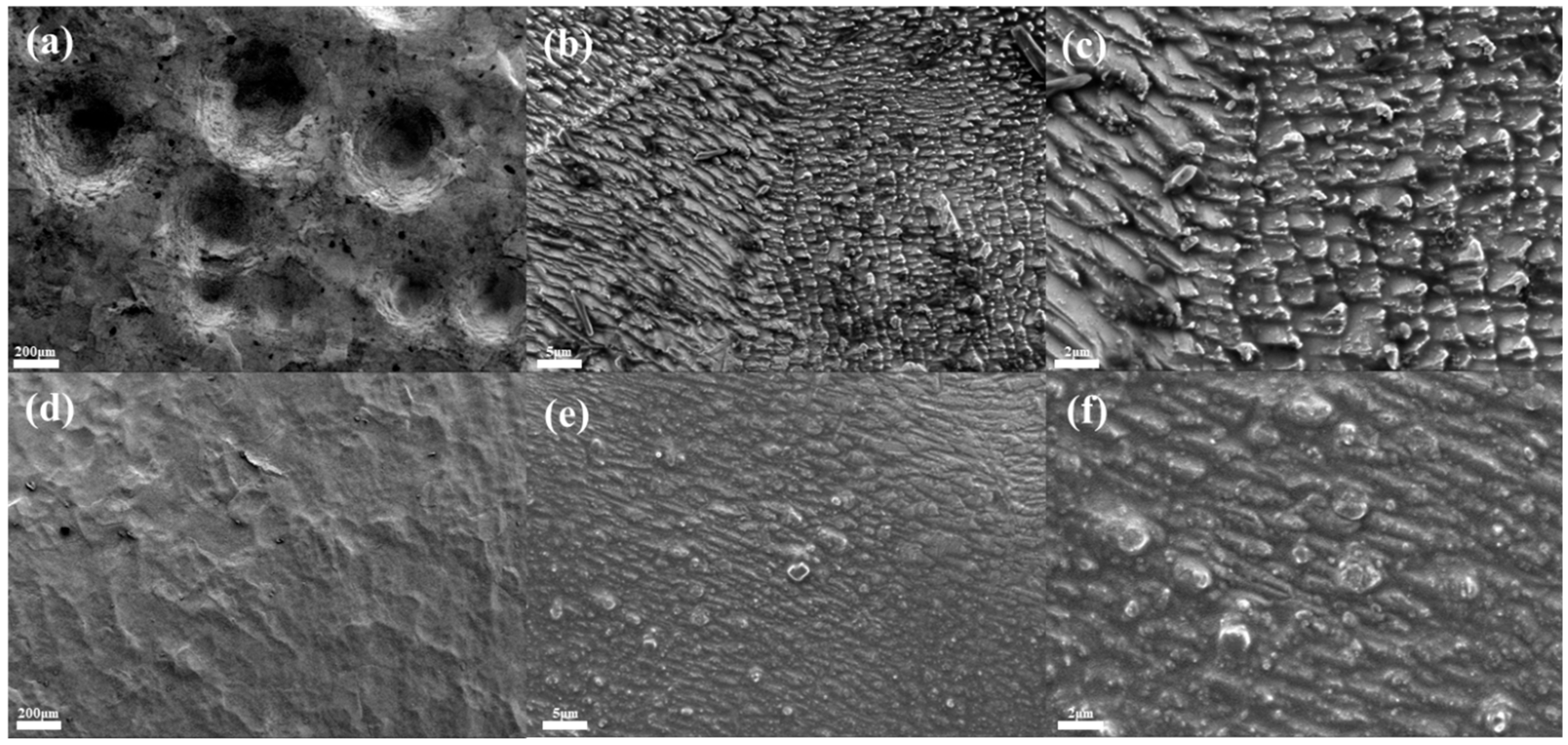

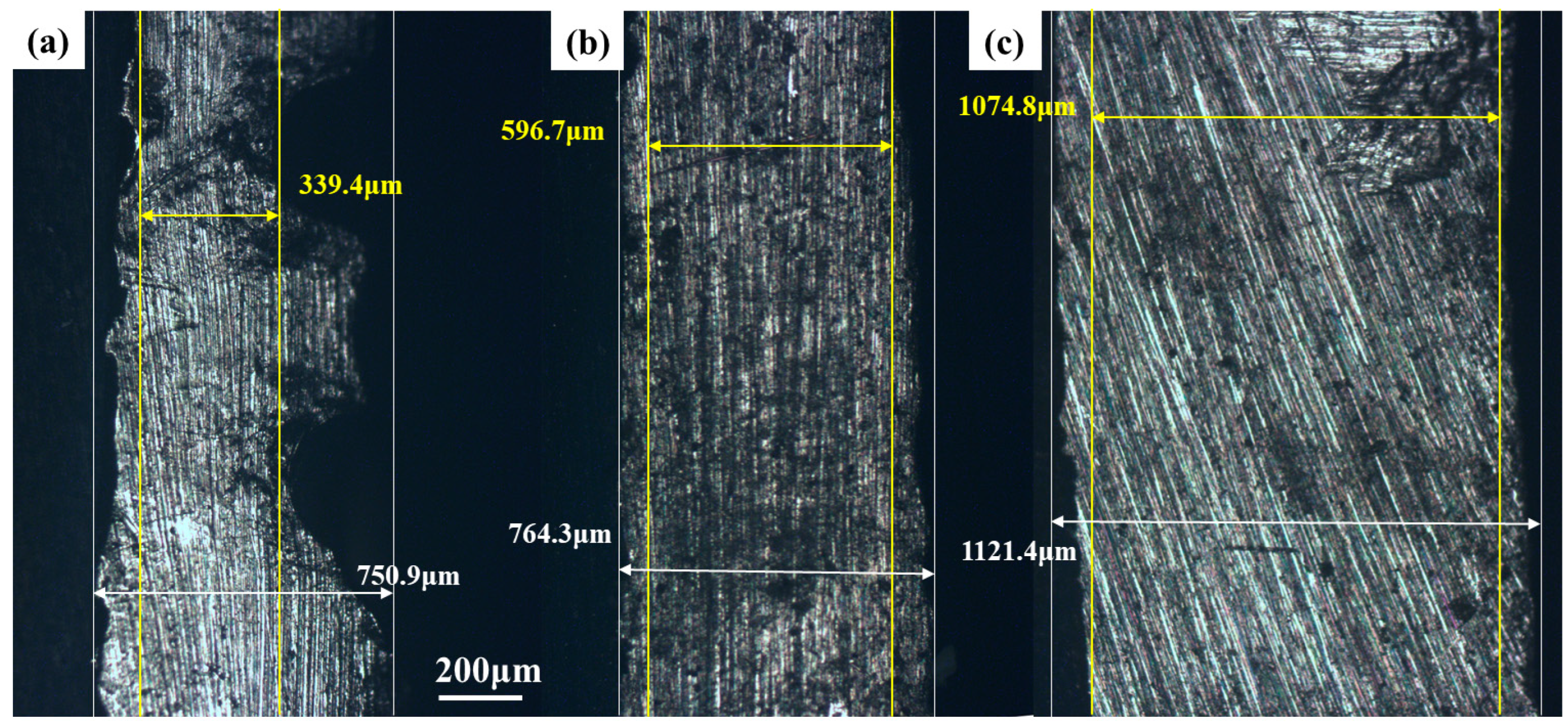
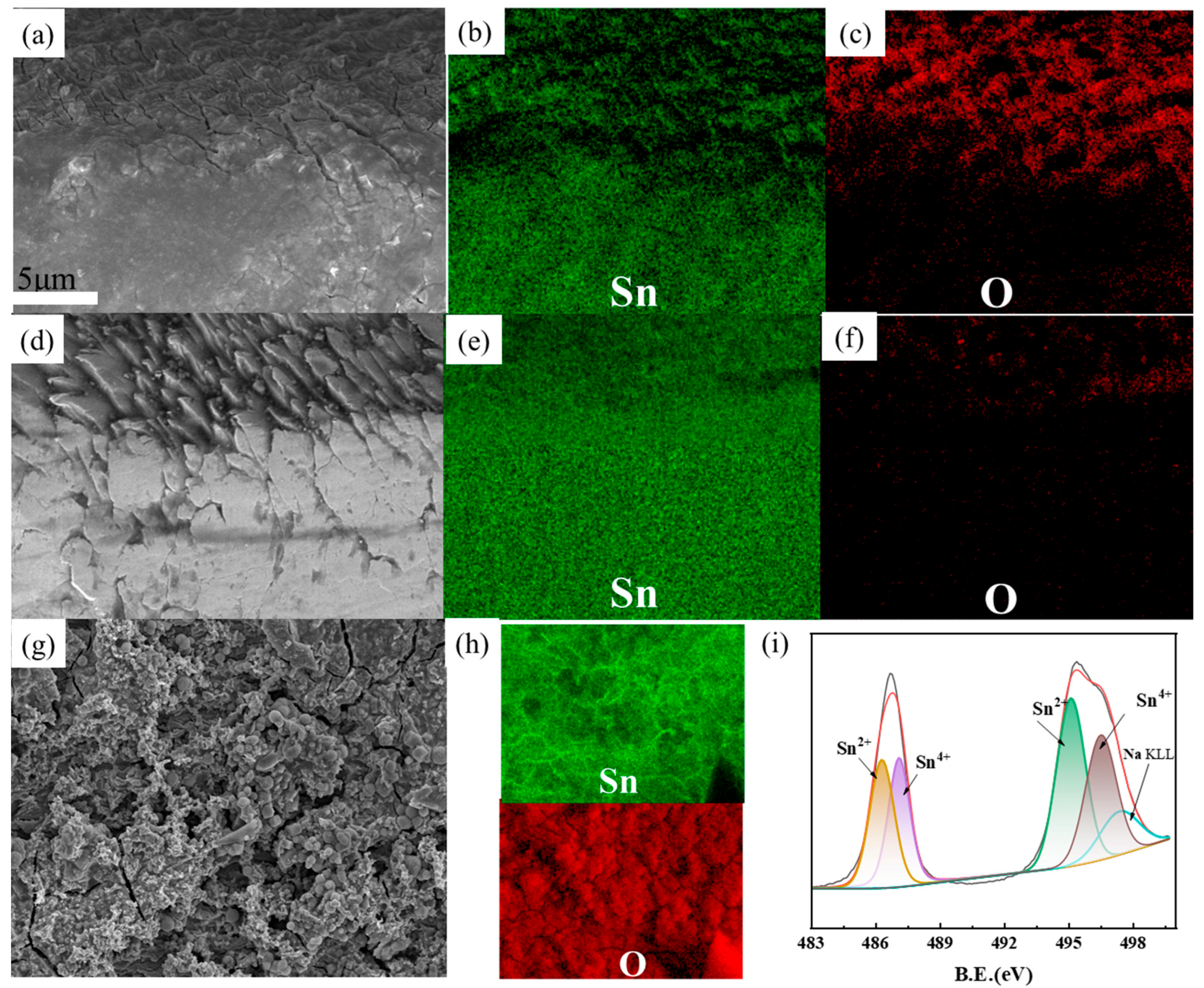


| Conditions of Dissolution | Conventional | Ultrasonic |
|---|---|---|
| temperature | 50 °C | 20 °C |
| NaOH concentration | 6 mol/L | 4 mol/L |
| H2O2 concentration | 30% | 15% |
| H2O2 addition amount/theoretical amount | 2.5 times | 2.0 times |
Disclaimer/Publisher’s Note: The statements, opinions and data contained in all publications are solely those of the individual author(s) and contributor(s) and not of MDPI and/or the editor(s). MDPI and/or the editor(s) disclaim responsibility for any injury to people or property resulting from any ideas, methods, instructions or products referred to in the content. |
© 2025 by the authors. Licensee MDPI, Basel, Switzerland. This article is an open access article distributed under the terms and conditions of the Creative Commons Attribution (CC BY) license (https://creativecommons.org/licenses/by/4.0/).
Share and Cite
Wang, D.; Wang, T.; Wang, S.; Xia, H.; Miao, W.; Le, T.; Zhang, L. Ultrasonic-Catalyzed Oxidation and Dissolution of Tin Using Hydrogen Peroxide. Molecules 2025, 30, 1591. https://doi.org/10.3390/molecules30071591
Wang D, Wang T, Wang S, Xia H, Miao W, Le T, Zhang L. Ultrasonic-Catalyzed Oxidation and Dissolution of Tin Using Hydrogen Peroxide. Molecules. 2025; 30(7):1591. https://doi.org/10.3390/molecules30071591
Chicago/Turabian StyleWang, Dongbin, Tian Wang, Shixing Wang, Hongying Xia, Wenlong Miao, Thiquynhxuan Le, and Libo Zhang. 2025. "Ultrasonic-Catalyzed Oxidation and Dissolution of Tin Using Hydrogen Peroxide" Molecules 30, no. 7: 1591. https://doi.org/10.3390/molecules30071591
APA StyleWang, D., Wang, T., Wang, S., Xia, H., Miao, W., Le, T., & Zhang, L. (2025). Ultrasonic-Catalyzed Oxidation and Dissolution of Tin Using Hydrogen Peroxide. Molecules, 30(7), 1591. https://doi.org/10.3390/molecules30071591






